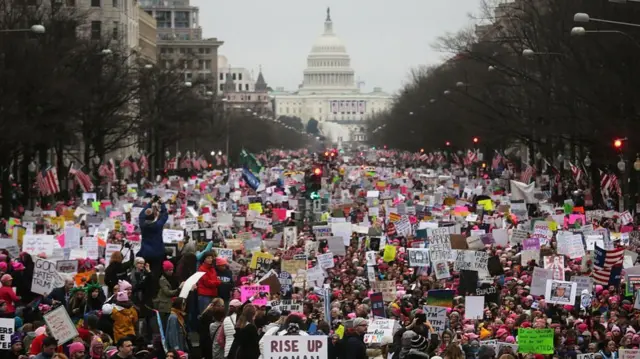The walk that started it allposted at 2:34 p.m. Greenwich Mean Time
 Holly Honderich
Holly Honderich
Reporting from Washington DC
 Image source, Getty Images
Image source, Getty ImagesIn the wake of Donald Trump’s surprise victory over Hillary Clinton in 2016, the first march unfolded in record time, growing from a few disconnected Facebook posts from women calling for protests to a planned national movement in a matter of weeks.
On January 21, hundreds of thousands of people poured into the nation’s capital, gathering a crowd nearly three times the size of Trump’s inauguration the day before.
In Washington and at coordinated events across the United States, women carried anti-Trump signs and sported pink knit “pussyhats” — a pointed reference to the Access Hollywood tape in which Trump bragged about having seized women’s genitals.
“I had never seen anything so crowded, you could barely move,” said Sharon Baseman, a Democratic activist from Michigan who traveled to Washington for the 2017 march.
“It was overwhelming and inspiring.”
In the years since, the Women’s March has remained the face of the fight against Trump’s Make America Great Again (MAGA) agenda. The movement helped unite the Democratic Party against Trump, a strategy that allowed them to retake the White House in 2020.
But after Trump’s victory in November, leaders must confront the failures of the resistance and its future.


